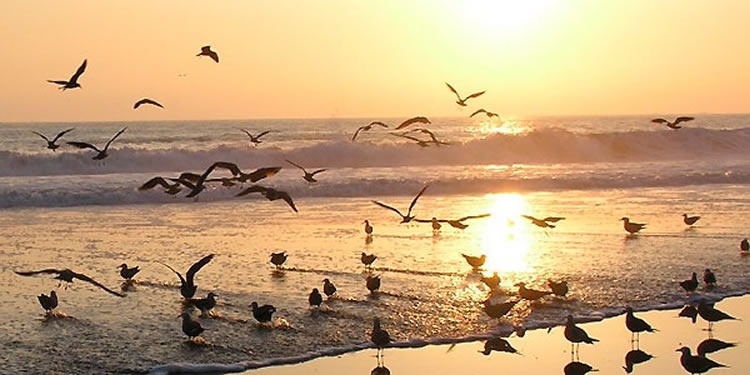
World famous for its large soles, Mar Chiquita (small sea) is a beautiful marine lagoon. In the maps, the lagoon appears as a longish water mirror parallel to the Atlantic Ocean and separated from it by a chain of high dunes. Inland, the lagoon becomes wider and forms a true inner sea, thus explaining its name. In addition to fishing beautiful pejerreyes in the winter and large mullets and corvinas negras in the summer, it is also possible to watch hundreds of bird species that live and migrate within the micro-climate guaranteed by the fresh water mirror.
But beyond the fact that there is good fishing inside the lagoon, the fishing site per nature is its mouth. There, a small channel joins the lagoon with the sea and, according to the tide table, the water flows from the sea into the lagoon or from the lagoon out to the sea. This is fundamental to be taken into account by approaching anglers, as the water inlet or outlet determines the presence of the large soles in the mouth in search for pejerrey shoals that come into or go out of the lagoon.
The best site for fishing on the coast is on the bank opposite the town. The locals offer the service of crossing the anglers in their boats in exchange for a small contribution. The mouth of the lagoon is a wild and windy place, and there are no services available, therefore, the anglers must take everything necessary for their fishing outing.
Predominant specimens range from 2 to 10 kilograms and the best months to fish them are the summer season months.
Anglers must fool them into thinking that the pejerrey hanging from the line slides naturally. It could be asserted that the fishing modality is spinning with live bait. In this case, pejerreyes measuring from 10 to 15 centimeters suspended from the end of a line, from which a carrot-like strike indicator hangs carrying two hooks, one triple and another one simple, which prevents the lure from turning over itself. For such purpose, long cast sea rods are used, together with front drag reels with 0.40 nylon.
The sole meat is delicious. The restaurants of the area always offer "sole in Roquefort" as the dish of the day, having previously bought fresh fish from the anglers at the mouth.
Fishing sole is for lovers of subtlety. This fish changes color to perfectly adapt itself to the soils over which it slides. More than swimming, we could say that it crawls. With a flat physiognomy, it is sandy brown on one side and totally white on the other. A perfect hunter by nature, it sticks to the sandy bed and waits for the passing of the pejerreyes. When it considers the time is right, it jumps with its mouth springing towards its prey, being its attacks so accurate that one could assure that it never fails. Once it is hooked, the sole puts up a spectacular fight, forcing the angler to fully concentrate if he wishes to bring it to the shore.